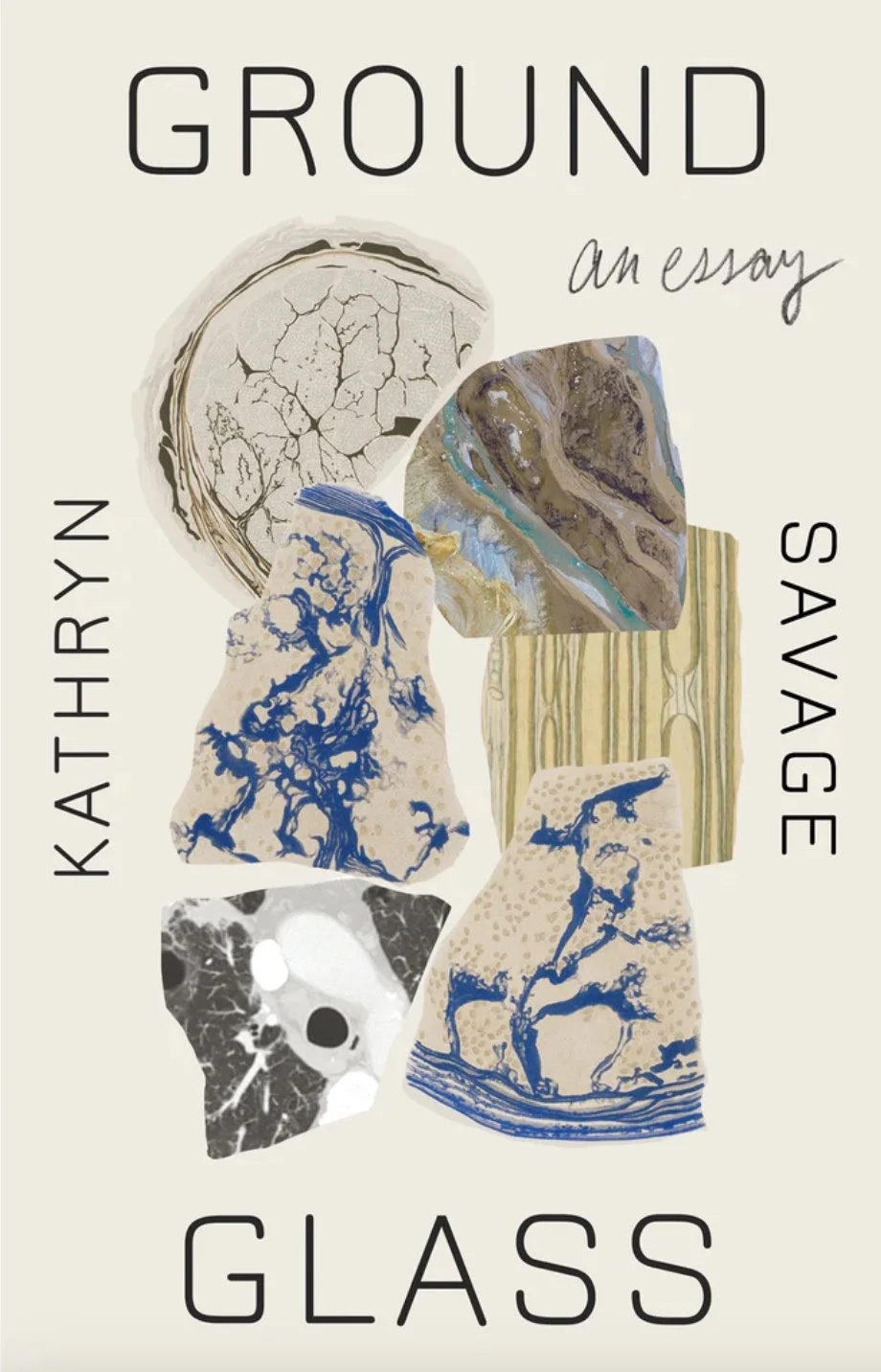Groundglass: An Essay by Kathryn Savage
Coffee House Press, $16.95
Reviewed by Whitney (Walters) Jacobson
Like the causes of her father’s illness and the long-lasting effects of local pollution, Kathryn Savage’s Groundglass: An Essay (Coffee House Press) is an enigma of a book. On a structural level, the text is 161 pages (sans backmatter) and organized as a segmented essay with titled sections ranging from “Humbolt Industrial Area” to “Tar Creek” to “Shotgun Fungi.” Within this framework, Savage ponders the links between toxins in her family’s living environment and their health as well as the earth’s health.
As a longtime Minnesotan resident, I was humbled by how much I didn’t know about Superfunds and brownfields, both in state and nationally. Often building from staggering data, “According to findings of a 2020 EPA report using census data, approximately 200 million people live within three miles of a Superfund remedial site or brownfield, which is roughly 61 percent of the U.S. population,” Savage prevents a simple interpretation by following the evidence with an interdisciplinary analysis—in this example, that all Superfund sites are on Indigenous land (14).
Though her family’s health has been impacted by pollution, and she continues to live near a brownfield (which may continue to harm her), Savage doesn’t shy away from her place in environmental racism: “There are no longer the same racist covenants mediating who can hold a deed to this square of unceded Dakota land and the house I live in on top of it, but . . . I have a responsibility to reckon with this property, on this land. My complicity in the violence of history, and the ugliness of gentrification I signify” (105-106). In grappling with her inheritance (physically, socially, and materially), Savage produces rich material to grow from, much like the remediation she strives toward ecologically.
As she pushes for change to reverse pollution’s effects on the earth and its people, Savage ponders: “What would true remediation look like here, ecologically and culturally? A restoring, a redress. It would be reparations; the end of settler violence; land back; my absence” (40, her italics). The concession of Savage’s blunt declaration is thunderous. Her searing questions and metaphors are also compelling in situating her argument.
I think about how legacy ecological violence and other legacies of white supremacist thought and action thrive on imagining a world of separations and hierarchies that are not actual but invented to uphold such wrongs. I am as polluted as the sites. Could there be something humbling and revolutionary in understanding myself as a site of contamination? . . . I live both up- and downstream. (Savage 155-156)
Savage resists the inclination to focus solely on what has been done to contaminate the present, and insists readers consider the implications of our attempted fixes today, in particular what we bury. Will future generations remember what poisons we have purposefully hidden underground?
The book concludes with a Notes section that presents as a pseudo annotated bibliography. Savage lists all her sources and annotates many of them, in addition to some stand-alone notes. Savage is to be commended for citing her sources, and many of the notes were insightful with additional information and connections not made in the essay, such as additional context for the scene of her father’s cremation (164), her interview methods (171), and the influence Rebecca Altman’s writing had on Savage’s thinking (191-192).
However, some of the commentary reads as redundant, such as when Savage notes she paraphrased or quoted material from the cited source. She has already provided attributions to sources within the essay itself, so are her explanations there to give credit more directly to the sources? If so, why comment on some and not all? Are sources without annotations recommended reading?
The epigraph to the Notes section may be a key: “annotation as excess, leaking, gratitude” (Savage 163, her italics). Perhaps, like the Superfund sites she examines, there is not always a guiding pattern for what spreads and contaminates, for what changes us—for better or worse. Perhaps, then, these notes and citations are tailings to her essay—pieces that will uniquely influence the variety of readers who interact with and process them.
Whitney (Walters) Jacobson holds an MFA in Creative Writing from Minnesota State University Moorhead. Her poetry and creative nonfiction have been published in Punctuate, Feminine Collective, Up North Lit, After the Pause, and In the Words of Womyn International, among other publications. She is currently working on a collection of essays exploring skills, objects, and traits passed on (or not) from generation to generation. She maintains a curiosity in memoir and the themes of feminism, water, inheritance, blue-collar work, and grief.

